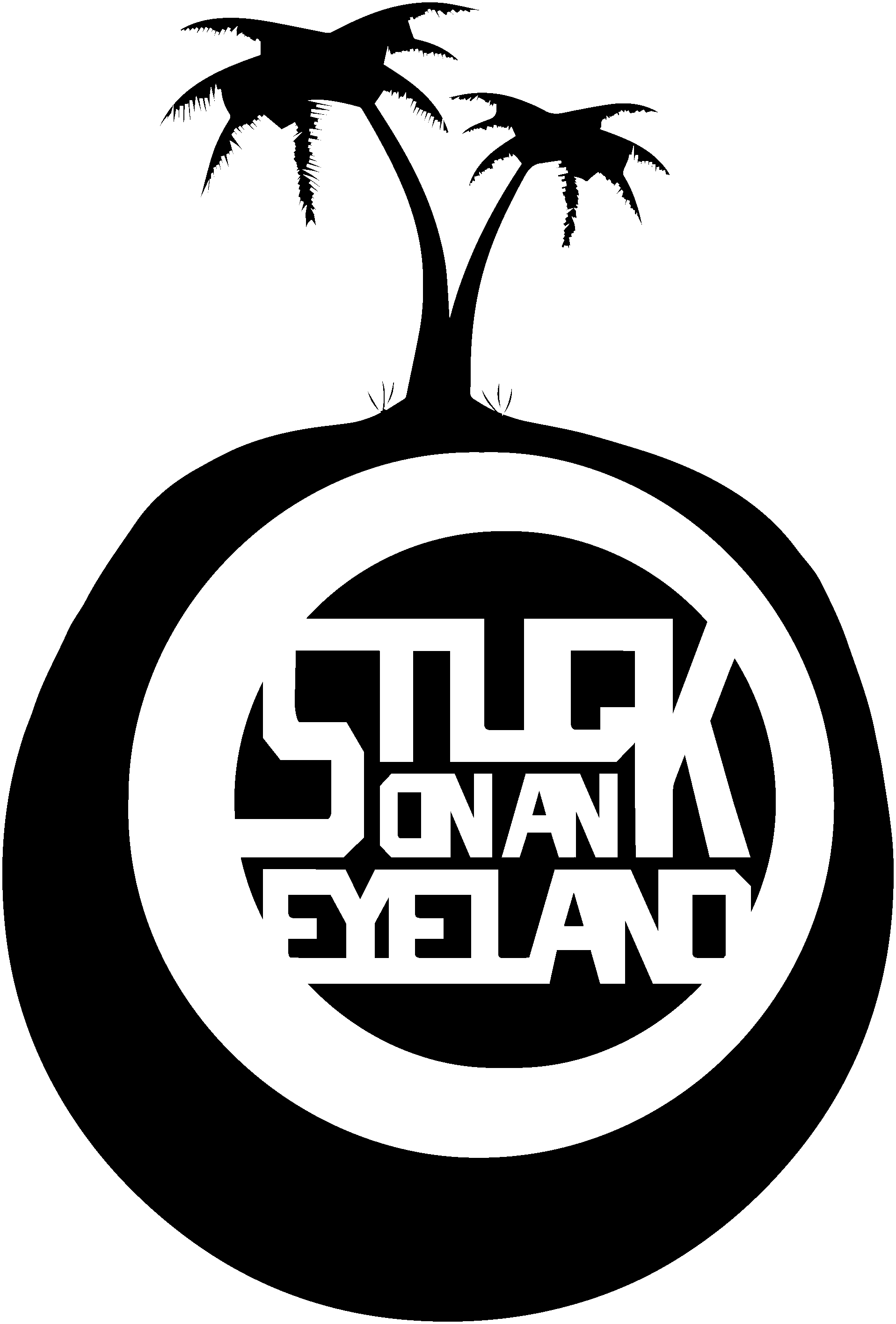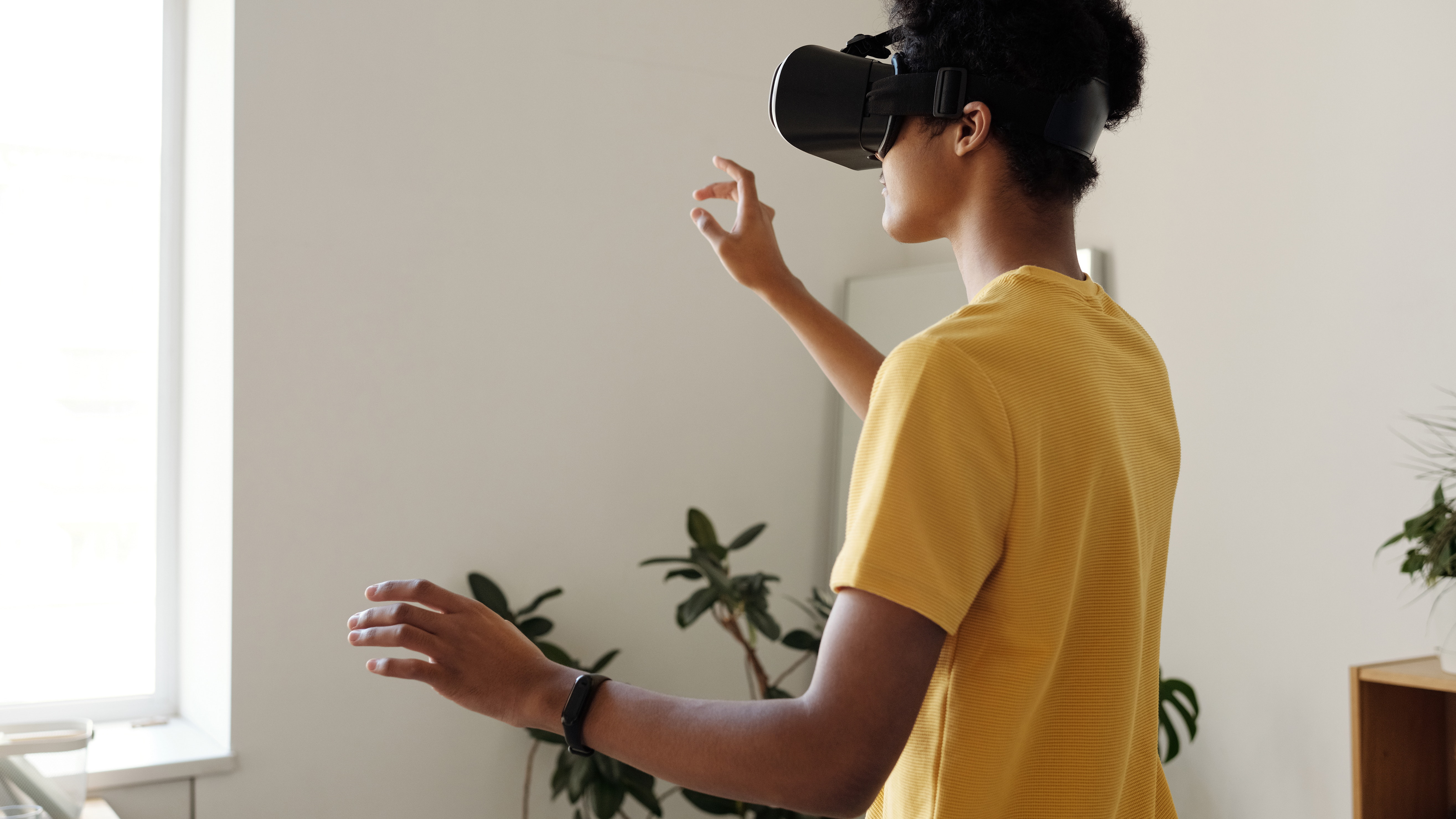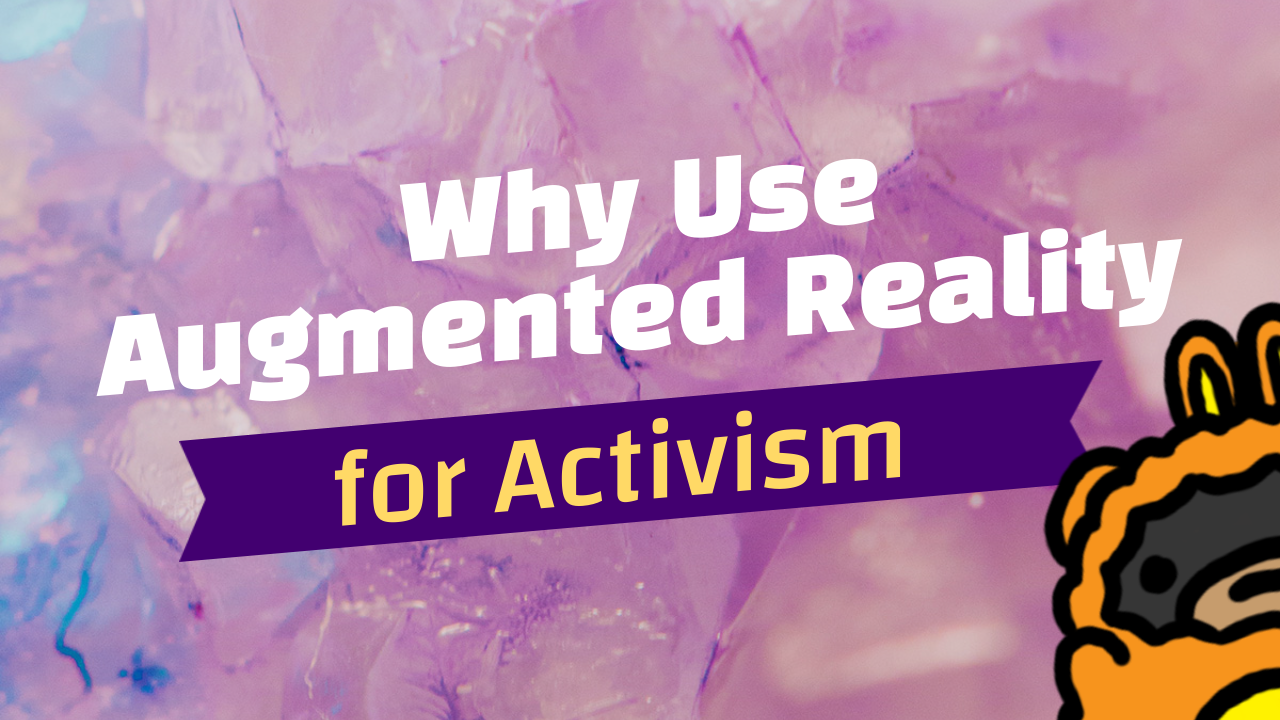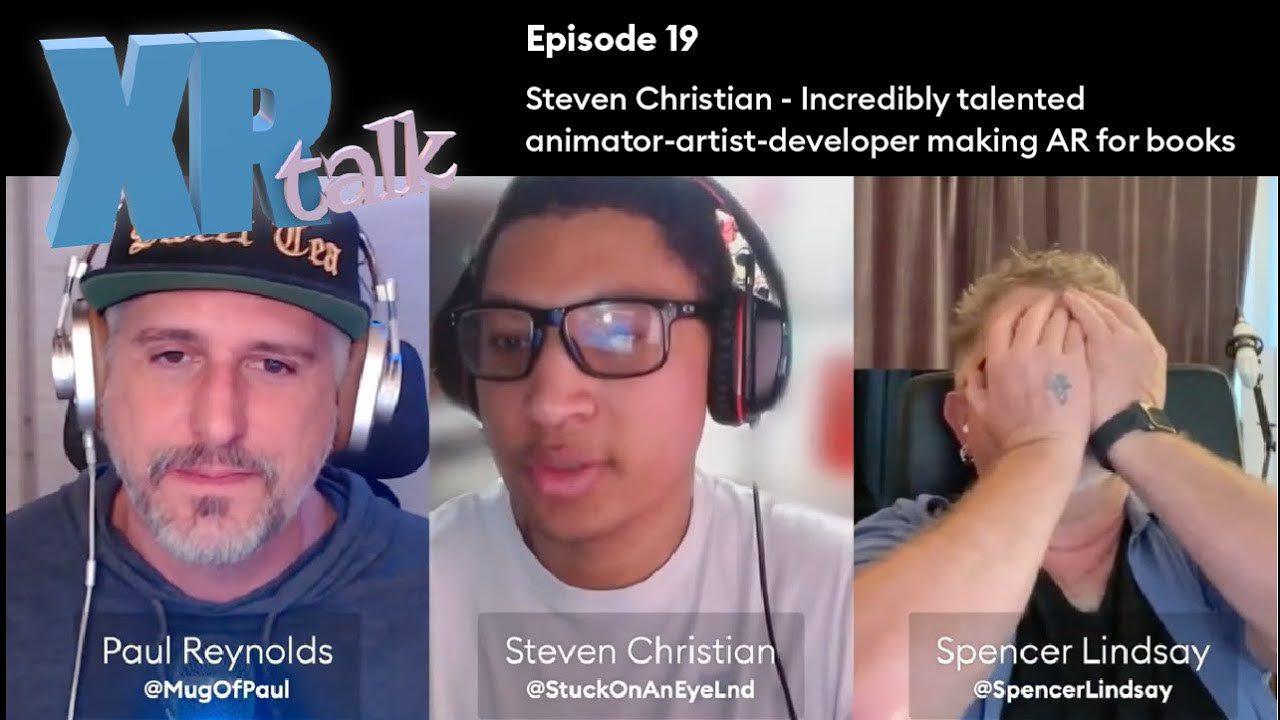For the longest time, I have tried to figure out how to incorporate technology into my creative process. I grew up during the tech boom and that ability to integrate tech seamlessly has stuck with me for a long time. I remember when I was at Rose City Comic Con where I had a booth selling comics and stickers that I make for Iltopia. I have no problem showing people the comics and illustrations that I make, but I am an animator. I make cartoons - moving pictures that are often synced to music and sound effects. In a convention setting, sharing animation is really only possible through YouTube links and Vimeo videos. With the spotty internet you get at a convention, showing a video on a phone can be difficult. Trying to sell animated assets is even harder. People don’t buy DVDs anymore and selling stuff with a QR code on it is not really a thing. Because of that reality, I have not been able to capitalize on my work as an animator aside from taking one 1 or 2 animation projects a year. That is tough to build on when you are starting out.
I really had an interest in combining my physical art with the digital stuff, but I was unsure how to do that. I really thought about how to make animation more accessible at conventions. I thought that a smartphone would be great, and using a website to engage with comics and cartoons as an application, but the whole interaction was still focused on using a link independent of the physical products I sold. I happened to be watching a Breakfast Club interview with Will.I.Am where he demoed a new graphic novel he was working on (https://youtu.be/I1rULc9SZxA?t=1953).
I was interested because he was a rapper that wrote a comic book with Marvel about a Hip Hop Opera. What I didn’t expect was him pulling out his phone, shining it over the pages with an app, and watching animation, and digital elements come to life from the page through the screen. I was dumbfounded because I had never seen anything like that. More importantly, I was witnessing the answer to my problem. I instantly bought the book, waited for it to come in from Amazon and experience it myself. Unfortunately, the demo Will.I.Am showed was only a demo. The book was released in 2017, and the app wasn’t slated until sometime the following year. I was inspired by the video, but was left hanging because I was unsure how to approach achieving what I saw in the interview. That experience stuck with me for years. In fact, I didn’t even read the book because I bought it for the AR. I eventually revisited the book at some point in 2020 when I thought about wanting to experience the AR. To my surprise, there the app was on the app store. I paid that $5, downloaded the app, and shone the phone over the book. Low and behold the experience was realized! I will say that it was what I expected. I will circle back on the experience later because the book helped me explore other ideas.
In one of my unrelated ventures, I went to Adobe Max 2019 as a birthday present for myself (https://youtu.be/RWlPMV7YuSg).
I've always wanted to go there since I got into the creative scene. Being in such a small area with so many amazing creatives was truly inspiring. What I did not know was that they would be launching Adobe Aero (https://youtu.be/IutVq6cPBX0) at the convention.
What I was looking for with Master’s of the Sun ended up following me to the Adobe Max. Not literally, but it felt like it was destiny that AR would be the focus of the convention. I saw demos with image tracking and 3D model stuff as well. It was just an action packed experience that gave me so much inspiration. The experience only got better as the day went on. I ended up entering into one of the many raffles that the vendors have at booths. I was a winner of one that yielded me a new iPhone 11. This was great because I would need an iPhone to develop my AR app for. I also ran into a vendor that manufactures the paper I buy off Amazon for my book. For those that are unaware, I write, illustrate, print, and bind all my books from my home studio. I have a running joke that I make everything but the paper and the ink. It was pretty surreal to see the manufacturer (Accent Opaque) be present at the event.
I spoke to them and told them how I love their paper. I joked around about how I didn’t know they were a real company, and that I thought they were a sketchy Amazon storefront. The joke was on me! I told them how I make books and I just recently saw an AR demo that I would love to incorporate into the books I make. To my surprise, one of the managers at the booth was a children’s author. To put icing on the cake, she wrote an AR book (https://youtu.be/NCbsu8TQxH8) that used the Accent Opaque paper, and had an AR app that brings the pages to life. I was shocked and surprised because this was exactly what I wanted to do with my work. I was seeing my dreams and aspirations for combining Art and technology together realized, and I wasn’t sure how I felt about it. A part of me felt like this was something I was looking for, but also, I was having a bit of imposter syndrome because this was not anything exclusive to my work. Nevertheless, it was awesome, I wanted to learn more about it, and more importantly, I wanted to integrate AR into my work.
I understood that Adobe Aero was an iPad app. I have a first-gen iPad mini that got hit with the Apple Curse, so that was a lost cause. I asked how they made the app, and they were kind enough to give me resources to get me started.
I had a few videos talking about the basics of AR and the pathways I could take. There was the 3rd party route which would allow me to make stuff quicker, but I would not be able to brand it. I could hire a developer, but that would cost me about $10,000. Plus, I wouldn’t have any flexibility on updating the app without paying more. My last option was learning how to make apps myself. Luckily, the resources were available to access. All I needed was the time, energy, and drive. During this time, I was not really working much, and it was pre-COVID. I hopped on Udemy because I saw an ad about $10 courses for the holidays, and I hopped on the opportunity. I found an AR course that had pretty good reviews (https://www.udemy.com/share/102hV6BkcbdFxXRXw=/) and spent the time powering through it. It introduced me to Unity, which I ended up downloading back in 2014, but never really opened it because I was overwhelmed by the work required for 3D stuff. My feelings were very similar to how people feel about learning After Effects. Nevertheless, December 11, 2019, I bought the course and began my AR journey! It was days on days of trying to understand C# and the inner working s of Unity, but it reminded me of my initial venture into mobile development. I was a windows mobile developer back when HTC made pocket pcs. For thoses that didn’t have T-Mobile Sidekicks in the early 2000s, you could have a flip phone, a pocket pc, or a blackberry. My exploration of mobile development coincided with playing html on my Myspace page. You can check out my old forum Repo here: http://up.ppcgeeks.com/Touch%20Pro%202/Users/Coolsac32/ | https://archive.codeplex.com/?p=sacdev
I learned alot and I felt more and more comfortable with Unity. The AR part seemed pretty easy to pick up, but what really challenged me was the ability to add game functionality to the experiences. That is where the biggest growth for me was because I was actually learning to code while I was working on projects. I suppose I could go on a tangent about how current approaches to teaching underserved youth coding fail in the ways that white communities are thriving, and that is in the direct application of coding towards tangible goals and career paths. Coding for coding sake is as useful and learning pig latin. It’s cool, but it won’t pay the bills. There must be clear visions with direct applications of these skills like you see with sports and entertainment.
I digress…
The AR journey for me once I finished my AR course landed me with a new level of comfort with the medium and the software. I felt Iike I was on this path where I wanted to add AR to everything. It didn’t matter what it was compelled to add AR to puzzles, face masks, and even to my medschool studies. It was very very rewarding creatively and really gave me a direction to channel my creativity because most of my work is made in Photoshop, After Effects and Adobe Animate, yet the way people interact with it is in their hand. As a creator, having AR and working on mobile apps that interface with my print products really enhances the experiences that I create because I don’t just make art anymore, I create experiences that expand the ideas of what Black art is. It is not archaic or primitive. It is innovative and immersive.
Leading up to COVID, I launched Eyelnd Feevr AR - January 14th to be exact. This was prior to one of the maker markets that I regularly vendor at in Portland. I set up a demo and added it to the collection of products I was selling. I demonstrated how some of my art and books come to life with the AR app. People went wild for it. It was interesting because people like my work, but people never go crazy for it like what I witnessed. It was then that I knew that I struck gold. I needed to refine my craft and improve on the work because the reality is that there are not many Black people in the space making AR art and apps.
Thus my mission from launching Eyelnd Feevr AR has been to find ways to lower the bar of entry for other Black creators into the space because I feel that they can benefit from the lack of limitations that AR provides for them creatively. I know tons of visual artists that make beats on the side, and I know a handful of animators and photographers that are savvy with after effects and video production. The potential is limitless. We have seen how Black people have shaped the landscape of music and TikTok. Why not allow them to thrive in XR?
A few branches of my journey that sprouted from this initial AR journey led to me wanting to redefine the way we interact with AR books using low-cost head mounted displays, applications of AR in the healthcare industry, hand tracking solutions with mobile devices, and creating culturally relevant content that encourages more Black people to create in AR. This ultimately led me to rebranding my podcast and making a YouTube Playlist that allows me to be the “Black guy on YouTube that makes cool AR stuff.” Yes, what came from my AR exploration was to be a YouTuber so that I can tell stories about my process and why I create the work I do. I hope that when people see what I put out, they will be able to demystify many of the assumptions that are associated with emerging technology. Do you need to know how to code to make AR stuff? No. Do you need to know how to 3D model? No. Do you need to know how to animate? No. Do you need to know how to design? No. If all you need is a computer and a vision to create, then what is stopping you? That is the question I will continue to address in the Black community specifically.











